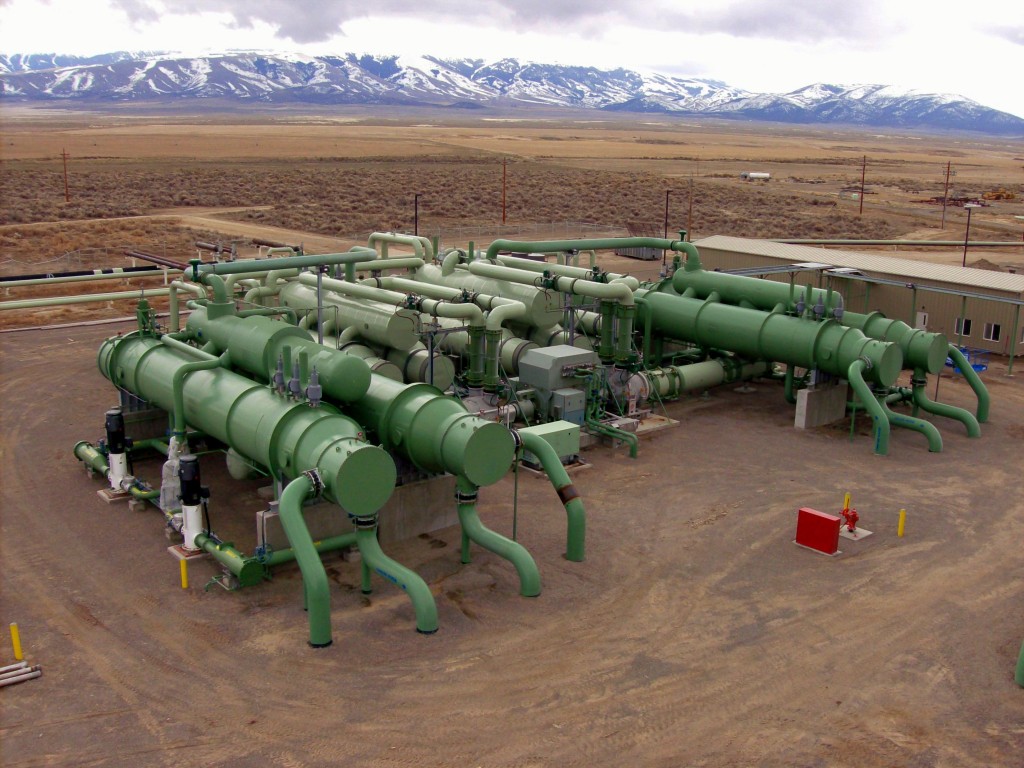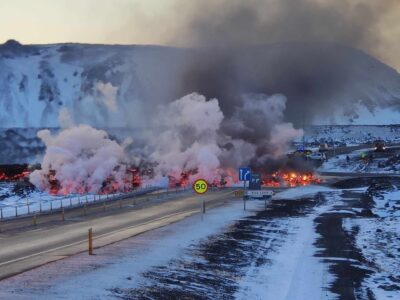U.S. geothermal market heating up
The U.S. Geothermal Energy Association (GEA) calls 2009 a a take-off year for a new era of geothermal growth." After remaining fairly flat for years, geothermal power activity is heating up, industry experts say.
A recent article by Renewable Energy World looks into the recent growth for geothermal development in the United States. According to the article, the Geothermal Energy Association in the U.S., calls 2009 “a take-off year for a new era of geothermal growth.” After remaining fairly flat for years, geothermal power activity is heating up, industry experts say.
“All together, the report identified 6.44 GW of new geothermal power plants under various stages of development and an additional 667 MW of early-stage planned projects that have not yet secured the geothermal resource.
If all of the planned projects were to go forwards as planned, an unlikely scenario, the total U.S. geothermal capacity would reach today’s worldwide capacity of 10 GW — enough to meet the power needs of an average 10 million people or supply 25 percent of California’s 2008 power consumption. But advocates believe the ultimate potential to be much larger still.
For one thing, geothermal energy supplies a steady supply of energy that utilities can count on for baseload power, instead of intermittent sources like solar or wind, which generate power when the sun shines or the wind blows — events that can’t be controlled by utilities. As Henry Kelly, principal deputy assistant secretary for the DOE’s Energy Efficiency and Renewable Energy office, put it: “Unlike waiting for the wind to blow, rocks are hot day and night.”
And geothermal costs can be less per kilowatt-hour over the lifetime of a project. In 2001 the International Geothermal Association estimated current costs at between US $0.02 to $0.10 per kilowatt-hour, and potential future costs of $0.01 to $0.08 per kilowatt-hour. The association estimated that investment costs would be around $800 per kilowatt of capacity. For comparison, the association estimated wind costs at $0.05 to $0.13 per kilowatt-hour, with potential costs of $0.03 to $0.10 per kilowatt-hour and investment costs of $1,100 to $1,700 per kilowatt of capacity. In 2006, a National Renewable Energy Laboratory report estimated the United States could develop 26 GW of geothermal power by 2015 and more than 100 GW by 2025.
But while geothermal has serious potential, already providing significant amounts of energy in some places (such as Iceland, where 87 percent of buildings are heated geothermally), geothermal hasn’t yet seen the kind of growth that wind or solar has, said Ron Pernick, a principal at research firm Clean Edge. Part of the reason is that geothermal projects cost a good amount of money upfront — centralized geothermal power plants tend to be large, while distributed heat-pump projects also are relatively expensive and not ideal for retrofits — and projects require a lot of engineering, Pernick said. Large projects also require a lot of political will to complete, he added.
Risk Aversion Limiting Growth: In spite of the growth in projects under development, the difficulty of getting financing has been a drag on the geothermal market, as fewer projects were completed than the association had expected, Karl Gawell, the executive director of GEA said. “This year was clearly hit by the market,” Gawell said. “We didn’t see the increase in [completed projects] moving as fast as we would expect. We expected to see more going through the final stages.”
In spite of all of these challenges, the number of projects under development is increasing, and Gawell expects more projects will get built this year than last year. “I expect it will go up very dramatically down the road,” he said. “There’s almost a backlog now of projects, down the road, moving from planning and construction, so I just hope it doesn’t cause supply and material bottlenecks.” He pointed to the shortage of solar-grade silicon that the solar industry experienced a few years ago. “We’ve got to have both the infrastructure and the market going forward in sync to make this happen.”
For the full article see link below.
Source: Renewable Energy World


















